In mid 1962, after two years at HMS Conway, I graduated. British India Steam Navigation Company, also known simply as BI, accepted me in August, as an indentured cadet (apprentice).

House flag and funnel
Once I’d been accepted I applied for a British Seaman’s Card and a Discharge Book


I had the paperwork to prove that I was a sailor, but I’d never been to sea.
In mid September I was order to join the tanker, Ellenga, on the 12th October, which was moored in the River Fal, just off the town of Falmouth. The vessel had been in dry dock and was about to sail for the Persian Gulf for a cargo of oil. For someone who didn’t have any intention of going abroad I was doing a lousy job of staying in England.

This is Ellenga 37,420 dwt built 1960 – the picture was not taken in the River Fal
On joining I became one of four cadets, and the other first trip cadet turned out to have been in my class at HMS Conway! Seeing each other helped us to fit in to our new life. Each cadet had his own cabin, and we all shared a Goanese steward who looked after our requirements. I didn’t have any idea before I joined that a lowly cadet would be entitled to the services of a steward, and we had a wine account!
Later I realised how lucky I was to join B.I.S.N.C. A Scotsman, William Mackinnon in 1856, had started the Company, and he set certain standards for the benefit of the officers and crew; conversely he expected a high standard of service from his employees. B.I.S.N.C. was a proud company and highly regarded by both officers and crew. Many of the crew had spent their whole life in the service of the Company, and they considered it a great honour to be in the Company’s employ.

British India Steam Nav Co’s first ship – 500 gt built 1856
We sailed early afternoon, and as a first trip cadet I was ordered to the bridge and told to watch and observe and not to get under anybody’s feet. This gave me the opportunity to see the British coastline sink lower and lower in to the silver-grey sea, while on our port side the haze of the French coast could just be seen on the horizon. Eventually, both the British and French coast disappeared, leaving us all alone in the Atlantic Ocean heading for the gateway to the Mediterranean, Gibraltar, and then on to the Suez Canal.
 Gibraltar
Gibraltar
I was on the Ellenga for about nine months and all of the cadets worked alongside the crew, because hopefully one day we would be watch-keeping officers and we would be expected to know how many men would be required to do a certain job, and how long is would take.
 In addition, we were expected to learn Hindi, because that was the language that the crew understood. Many of the crew spoke some English, because they had worked for the Company all of their working lives, but as an officer one was expected to speak Hindi. I still have my Malim Sahib’s Hindustani a book, which includes all nautical terms and words in common use both ashore and afloat, quoted from the front cover. (Malim Sahib = Ship’s officer).
In addition, we were expected to learn Hindi, because that was the language that the crew understood. Many of the crew spoke some English, because they had worked for the Company all of their working lives, but as an officer one was expected to speak Hindi. I still have my Malim Sahib’s Hindustani a book, which includes all nautical terms and words in common use both ashore and afloat, quoted from the front cover. (Malim Sahib = Ship’s officer).
I only wish I’d spent more time reading this book.
When I left home my father warned me about being sent for a ‘long weight’ or a ‘bucket full of steam’, so I was well aware of the tricks played by older hands.
Not long after joining I was told by the First Officer to get the Cassab from the forecastle store. Remembering Dad’s warning I made my way to the store and lay down on a coil of rope to have a doze. I figured I’d report back in about twenty minutes.
I dozed for a few minutes when suddenly the daylight from the doorway was blocked, and I rolled over to see why. It was the First Officer, and he was not at all happy with this first tripper. It was then that I was told in no uncertain terms that Cassab was Hindi for storekeeper, not some fictional item!
My life as a first trip cadet became a mixture of boredom and extreme interest. We were expected to learn the layout of all the deck pipes that carried the cargo oil, including the cross over values to switch oil from one tank to another and the position of the firefighting equipment.
On the other hand we had to take part in chipping paint off the rusted areas of the deck and bulkheads using a small hand held bronze hammer. We used bronze hammers because they were made from non-ferrous metal and would not cause a spark.
 The blisters were free – a bronze chipping hammer circ 1962.
The blisters were free – a bronze chipping hammer circ 1962.
A spark on a tanker was the last thing anybody wanted, because it could ignite the gas that seeped on to the deck from the crude oil. We used to receive regular warnings of tankers in distress due to gas igniting. I don’t remember ever reading that the damaged vessel survived, the report usually reported that the tanker had blown up due to gas ignition. The reports made comforting reading for those of us chipping away.
Once the bare metal had been exposed we would paint it with red lead paint (in today’s world, H&S would have a fit). After the red lead had dried, we used grey undercoat followed by the white topcoat. A 30,000 ton ship has a lot of metal to chip by hand. Many of the later ships in which I sailed the cadets and crew used an electric chipper that had several heads spinning at high speed, so making it easier to clean a large area quickly, but those vessels were not covered in gas.
The bane of using the non-ferrous hammer was that it quickly became blunt and required more force to belt the rust away so as to expose the metal deck. It was hot sweaty work in a Persian Gulf summer.
In our free time we studied, via correspondence courses, for our examinations to become deck officers.
‘Ellenga’ took me to some strange places. Our first port of call was Port Said as we transited the Suez Canal. We didn’t stay long in Port Said, just a few hours while the authorities created a convoy to transit the canal.  The canal was only wide enough for vessels to go one way, so a group of vessels will travel southbound to the Bitter Lakes, or a ‘cutting’ where the southbound convoy can stop and allow the northbound convoy to pass. While transiting the canal local ‘bum’ boats came along side, and those that had the company contract would hitch a ride through the canal; so that when we reached the ‘cutting’ they would carry our mooring lines ashore to bollards. If we passed the cutting we would anchor in the Bitter Lakes. Before the canal was built there were salt valleys in the area, which became flooded after the canal was opened; hence the name of Bitter Lakes.
The canal was only wide enough for vessels to go one way, so a group of vessels will travel southbound to the Bitter Lakes, or a ‘cutting’ where the southbound convoy can stop and allow the northbound convoy to pass. While transiting the canal local ‘bum’ boats came along side, and those that had the company contract would hitch a ride through the canal; so that when we reached the ‘cutting’ they would carry our mooring lines ashore to bollards. If we passed the cutting we would anchor in the Bitter Lakes. Before the canal was built there were salt valleys in the area, which became flooded after the canal was opened; hence the name of Bitter Lakes.
Mixed with the crew of the ‘bum’ boats we often had trinket sellers and entertainers.
 The sellers sold souvenirs, mainly to passengers on passenger ships, rather than the crew of tankers. Regardless, once we knew these entertainers / sellers would be aboard we locked everything down – cabin doors, windows, doors to the accommodation and any loose pieces of equipment belonging to the ship. We never locked our cabins at sea, but we did when ‘strangers’ were on board.
The sellers sold souvenirs, mainly to passengers on passenger ships, rather than the crew of tankers. Regardless, once we knew these entertainers / sellers would be aboard we locked everything down – cabin doors, windows, doors to the accommodation and any loose pieces of equipment belonging to the ship. We never locked our cabins at sea, but we did when ‘strangers’ were on board.
During my first trip through the Canal I was introduced to the Gully Gully man, who was an outstanding conjuror. On the main main deck he had an endless supply of day old chicks, and he could make them appear and disappear, and we (cadets) were only a few feet away from him. We couldn’t see how his tricks were done. He made the chicks appear out of thin air or our shirt pockets; he was very good and would have been top act for a TV show. We paid him as one would pay a street entertainer and when he had covered all of the officers and crew, and considered that he had made enough for the day, he shinned over the side and dropped in to a small riverboat that was following us.
 Once we crossed in to the tropics the small pool that we had on the tanker came in to its own. It was the cadets’ job to pump out the water each day around 6.30 to 7.00 am and refill with fresh seawater. Many times we noticed flying fish
Once we crossed in to the tropics the small pool that we had on the tanker came in to its own. It was the cadets’ job to pump out the water each day around 6.30 to 7.00 am and refill with fresh seawater. Many times we noticed flying fish  in the pool; they had ‘flown’ in during the night, perhaps attracted to the deck lights. We would catch the fish as the pool’s water level dropped and keep them in a bucket of sea water. Once we had them all we would present them to either the deck crew or the Chinese ‘Johns’. The Chinese ‘Johns’ where Hong Kong Chinese (Cantonese was their language) and they were either engine room fitters or the carpenter. We cadets had more to do with the carpenter than the engine room fitters.
in the pool; they had ‘flown’ in during the night, perhaps attracted to the deck lights. We would catch the fish as the pool’s water level dropped and keep them in a bucket of sea water. Once we had them all we would present them to either the deck crew or the Chinese ‘Johns’. The Chinese ‘Johns’ where Hong Kong Chinese (Cantonese was their language) and they were either engine room fitters or the carpenter. We cadets had more to do with the carpenter than the engine room fitters.
I don’t know why the Chinese crew members were called ‘Johns’, but perhaps it was due to the first Chinese person to take our British nationality in 1805, was called John Anthony.
The link for John Anthony makes interesting reading.
Kuwait (see picture below) is an oil rich kingdom that has its main city named after the country, but we were not to berth at the main city of Kuwait, but Mina Al Ahmadi the oil port a few miles outside the city.  At that time they were separate towns, but I think that Kuwait city has expanded so much as to combine Mina as an outer suburb today. Once along side (an oil jetty) we were told that we were not allowed outside of the refinery, and that the perimeters was guarded by armed guards, and a metal fence with barbed wire on the top.Loading 30,000 tons of oil would not take long; perhaps twelve to fifteen hours and the cadets had the job of supervising the loading under the officer of the day. If we had time we would be allowed to visit the ‘canteen’ within the confines of the refinery. This canteen was a corrugated metal building and was restricted to foreign crews only.
At that time they were separate towns, but I think that Kuwait city has expanded so much as to combine Mina as an outer suburb today. Once along side (an oil jetty) we were told that we were not allowed outside of the refinery, and that the perimeters was guarded by armed guards, and a metal fence with barbed wire on the top.Loading 30,000 tons of oil would not take long; perhaps twelve to fifteen hours and the cadets had the job of supervising the loading under the officer of the day. If we had time we would be allowed to visit the ‘canteen’ within the confines of the refinery. This canteen was a corrugated metal building and was restricted to foreign crews only.
Since joining the tanker I’d learned how to smoke and drink beer (I was a fast learner). The cost of a carton of two hundred cigarettes on the ship was eleven shilling and four pence (tax free of course) BUT the cost of the same carton of cigarettes in the Mina ‘canteen’ was seven shillings and six pence, a huge saving considering that I was paid four pound two shilling and six pence a week, for an eighty four hour week – we were not paid overtime.
To say that the purser was upset when we returned to the ship with a number of cartons of cigarettes would be an understatement.
The cost of a bottle of gin on the ship was about eleven shillings, and in the Mina canteen it was seven shilling. Fortunately for the purser, I didn’t like gin.
Inside the canteen it was all plastic chairs and Formica tabletops, everything was utilitarian, because nobody expected sailors to have any taste or finesse. I suppose we didn’t do our selves any favours because most evenings there were fights between different nationalities. Some would say that this was the only way tanker men could let off steam. They were not allowed in to the city, they would not see their wives or girlfriends for months on end and every port they visited was miles away from the population due to the risk of explosion or fire from the cargo that they carried.
When a tanker man could no longer stand the smell of crude oil, or handle the working conditions, he would leave, and his mates would say he had ‘tankeritous’ as if it was a disease.
From my position as a first tripper, I accept that we worked for long hours and didn’t get Sunday off every week. It was the life style of being at sea at that time. For years after leaving the sea, if I suffered from a heavy cough I could taste the crude oil. Heaven knows what it has done to my lungs.
From Mina we sailed for five days to Little Aden, which was across the bay from Aden, in what today is known as the Yemen. In 1962 Aden and the surrounding area was still under British control. The Crater District of Aden town is situated in a crater of an ancient volcano. This area was the main business area and to walk around for a spot of sight seeing was exhausting in the heat. I doubt that Aden will ever become a ‘must see’ place on anyone’s bucket list, but then I thought the same thing about Dubai and Muscat, and loved visiting both places earlier this year.
My visit to Aden town was some months in the future when we anchored off Aden to change deck crews and boiler clean. Once again we ‘tankermen’ could not leave the refinery area of Little Aden.

After discharging our cargo it was five days sailing back to Mina during which time we cadets had the unenviable task of supervising the cleaning of all the used tanks – tank cleaning, what a joy, six hours on, six hours off, day after day. Two cadets per shift with four or five crew members, it was hard dirty work.
I am second from the left – Health & Safety, what’s that when tank cleaning in 1962. To be fair we were supposed to wear breathing apparatus when we were fifty feet (15.5 mtrs) down a crude oil tank, but it was virtually impossible to climb down the vertical ladders while wearing the equipment, and to work when at the bottom. In the heat of the Persian Gulf we wore as little as possible. We didn’t work down the tank for too long, because the fumes would make one light headed (similar feeling as if one was a little drunk) and one’s judgment could be affected, and we still had to climb the fifty-foot vertical ladder to the surface.
There was one tradition that we all enjoyed on a daily basis, which was the consumption of fresh lime juice at 11.00 am.  This tradition was an obvious a throwback to the avoidance of scurvy when at sea, due to the use of salt as a preservative, before refrigeration, and the lack of vitamin ‘C’ because they didn’t have the ability to store for long periods fresh fruit and vegetables. It was because of this use of lime juice, during sailing ship days, that American sailors nick named British sailors ‘Limeys.’
This tradition was an obvious a throwback to the avoidance of scurvy when at sea, due to the use of salt as a preservative, before refrigeration, and the lack of vitamin ‘C’ because they didn’t have the ability to store for long periods fresh fruit and vegetables. It was because of this use of lime juice, during sailing ship days, that American sailors nick named British sailors ‘Limeys.’
In addition to being a welcome break from work, it also quenched our thirst. The odd thing about this tradition was that we used the lime juice to help us consume two large salt tablets!
We had to be careful that we replaced the salt lost due to excessive sweating when tank cleaning. Ironic that we used yesterday’s preventative solution to help us prevent a related problem two hundred years later.




 in 1805 and remained so for many years. Click on the link and read of the romance between the 2nd Governor, Sir Thomas Maitland and a dancer and how the hotel was named.
in 1805 and remained so for many years. Click on the link and read of the romance between the 2nd Governor, Sir Thomas Maitland and a dancer and how the hotel was named.

 A touch of the old days with pith helmets. . .
A touch of the old days with pith helmets. . .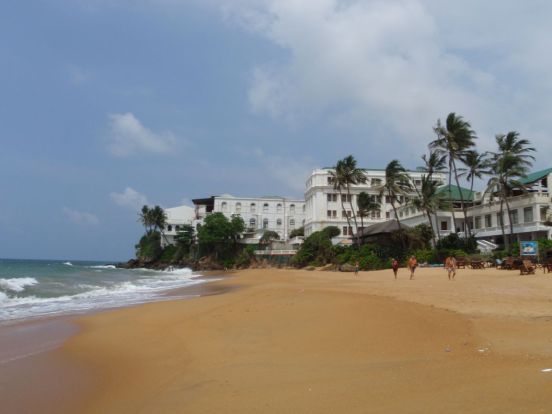
 The cooling effect of an ‘indoor’ water fall as you checked in to the hotel.
The cooling effect of an ‘indoor’ water fall as you checked in to the hotel.










 The restaurant can be seen on the left – the tide never came in far enough to upset our meal.
The restaurant can be seen on the left – the tide never came in far enough to upset our meal.
 I think it had just started to rain, but we were dry under the thatched roof.
I think it had just started to rain, but we were dry under the thatched roof. The fish is displayed in ice and the price marked is per 100 grams, which includes rice or chips (French fries), and salad or vegetables. Tell the cook how big a piece you want and it is cut fresh from the whole fish, and they are seldom wrong when estimating the weight before cutting – they weigh the piece in front of you and ask how you want it cooked. For me it is always grilled and I like swordfish, tuna, and any steak style fish slightly pink in the middle – it was grilled perfectly. In the photograph you can see 300 LKR (Sri Lankan rupees), which is about AUD $2.50 for 100 grams of Grupa (Grouper) fish.
The fish is displayed in ice and the price marked is per 100 grams, which includes rice or chips (French fries), and salad or vegetables. Tell the cook how big a piece you want and it is cut fresh from the whole fish, and they are seldom wrong when estimating the weight before cutting – they weigh the piece in front of you and ask how you want it cooked. For me it is always grilled and I like swordfish, tuna, and any steak style fish slightly pink in the middle – it was grilled perfectly. In the photograph you can see 300 LKR (Sri Lankan rupees), which is about AUD $2.50 for 100 grams of Grupa (Grouper) fish. If you can not find your fish in the ice display just pick from the blackboard.
If you can not find your fish in the ice display just pick from the blackboard.


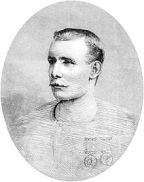 went on to be the first man to swim the English Channel.
went on to be the first man to swim the English Channel. was asked by Churchill, who was First Lord of the Admiralty, to produce a strategy to knock Turkey out of the First World War. His plan was accepted and he was in charge of the initial landings, which were successful. He was replaced when he became ill and his plan was altered, which included landing troops further south than the original plan – this alteration became the Gallipoli failure.
was asked by Churchill, who was First Lord of the Admiralty, to produce a strategy to knock Turkey out of the First World War. His plan was accepted and he was in charge of the initial landings, which were successful. He was replaced when he became ill and his plan was altered, which included landing troops further south than the original plan – this alteration became the Gallipoli failure.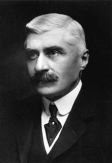 commanded the troops that defeated the Matabele 1893 and was in command of Mafeking through out the siege. As Governor of Queensland he laid the foundation stone for Brisbane town hall in 1917.
commanded the troops that defeated the Matabele 1893 and was in command of Mafeking through out the siege. As Governor of Queensland he laid the foundation stone for Brisbane town hall in 1917.

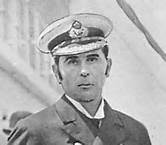 On a different note Capt.
On a different note Capt. 
 1885 Sir
1885 Sir  1912 Lt Colonel
1912 Lt Colonel 



 Cyril Abrahams
Cyril Abrahams
 Captain
Captain 
 Captain Eric Hewitt 1919 – 21 – he joined the RNR (Royal Navy Reserves) on leaving Conway and completed his sea time for 2nd Mates in the merchant navy. On the outbreak of war in 1939 he was called up for the RNR, and having served over the years in the RNR held the rank of Lt Commander.
Captain Eric Hewitt 1919 – 21 – he joined the RNR (Royal Navy Reserves) on leaving Conway and completed his sea time for 2nd Mates in the merchant navy. On the outbreak of war in 1939 he was called up for the RNR, and having served over the years in the RNR held the rank of Lt Commander.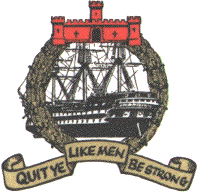



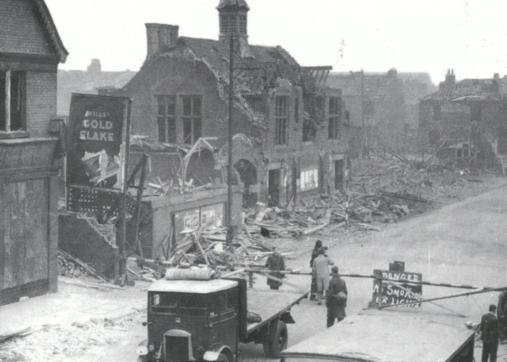

 As the tide dropped it was realised that only the forward part was on the rock shelf and the stern area was overhanging the end of the rock – she broke her back.
As the tide dropped it was realised that only the forward part was on the rock shelf and the stern area was overhanging the end of the rock – she broke her back. You can see how the line of the ship has changed
You can see how the line of the ship has changed Taken from ashore at the bow some time later.
Taken from ashore at the bow some time later. The large house at the top of the picture is Plas Newydd – the Marquis’ home.
The large house at the top of the picture is Plas Newydd – the Marquis’ home.
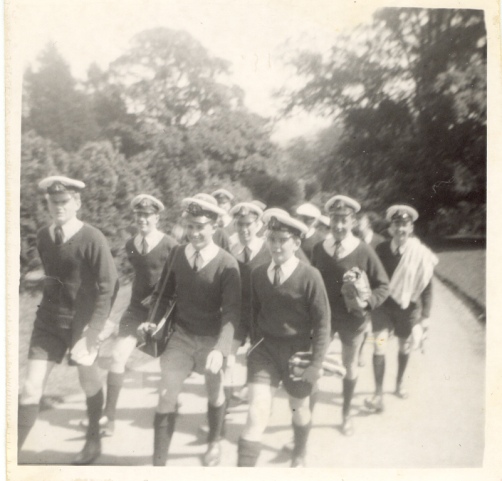

 The official opening was performed by HRH the Duke of Edinburgh on the 6th May 1964.
The official opening was performed by HRH the Duke of Edinburgh on the 6th May 1964.






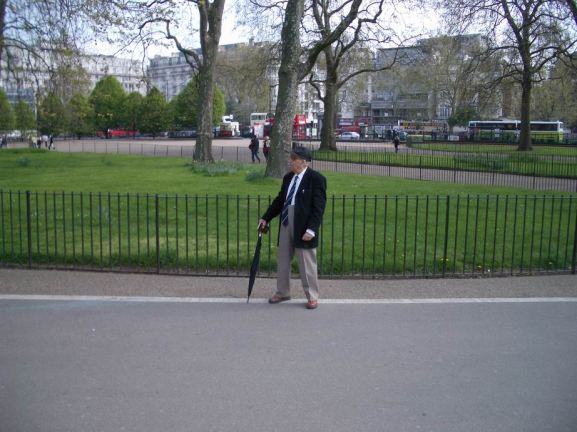




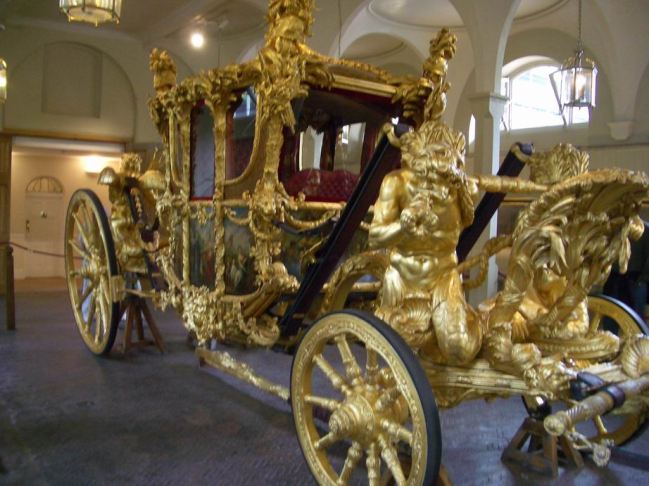

 In 1961 I was invited once again to accompany my friendly schoolmaster for another trip to Europe, but this time it would be southern Spain, staying in a hotel rather than YHA. We’d moved up market. I was also asked if a friend of mine would like to join us because the group would be larger than the YHA group the previous year.
In 1961 I was invited once again to accompany my friendly schoolmaster for another trip to Europe, but this time it would be southern Spain, staying in a hotel rather than YHA. We’d moved up market. I was also asked if a friend of mine would like to join us because the group would be larger than the YHA group the previous year.

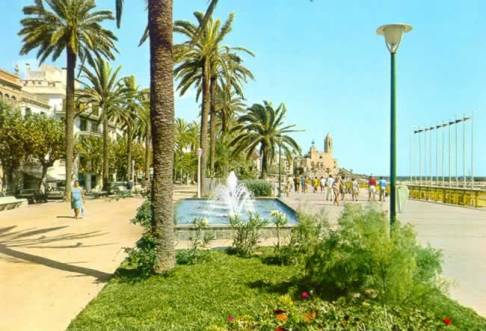





 As daylight strengthened the outer door of the cellblock was unlocked and a guard entered. We asked for food and something to drink. The guard pointed to our ‘football’ and bent down to turn on a water tap over the toilet. Leaning over the toilet we were just able to catch a single handful of water. The other hand we used to balance ourselves away from the open toilet hole. The cold water was welcome, but I was concerned that it might not be normal drinking water so most of mine went on washing my face to try and get rid of the tiredness.
As daylight strengthened the outer door of the cellblock was unlocked and a guard entered. We asked for food and something to drink. The guard pointed to our ‘football’ and bent down to turn on a water tap over the toilet. Leaning over the toilet we were just able to catch a single handful of water. The other hand we used to balance ourselves away from the open toilet hole. The cold water was welcome, but I was concerned that it might not be normal drinking water so most of mine went on washing my face to try and get rid of the tiredness.



 Zeebrugge was more interesting because it has a strong link to Birkenhead and Merseyside. During WW1 in 1918, the Daffodil and the Iris (both Mersey ferries) took part in the commando raid to sink obsolete ships in the main channel at Zeebrugge, to prevent German vessels leaving port. Although badly damaged, and with many killed and wounded, the two ferryboats managed to return to England, and eventually the Mersey.
Zeebrugge was more interesting because it has a strong link to Birkenhead and Merseyside. During WW1 in 1918, the Daffodil and the Iris (both Mersey ferries) took part in the commando raid to sink obsolete ships in the main channel at Zeebrugge, to prevent German vessels leaving port. Although badly damaged, and with many killed and wounded, the two ferryboats managed to return to England, and eventually the Mersey.




 Koblentz YHA was inside this castle
Koblentz YHA was inside this castle


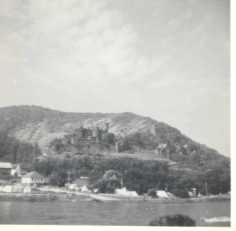


 As I left the testing centre I was given the above form that stated that I had failed, but if I wished to challenge this result I could apply to London for a more detailed test at my own expense. If I were successful in the London test, all of my expenses would be reimbursed.
As I left the testing centre I was given the above form that stated that I had failed, but if I wished to challenge this result I could apply to London for a more detailed test at my own expense. If I were successful in the London test, all of my expenses would be reimbursed.

 and funny enough at 16 Pool St across the road is
and funny enough at 16 Pool St across the road is Dafid Wynn Jones the butcher!
Dafid Wynn Jones the butcher!
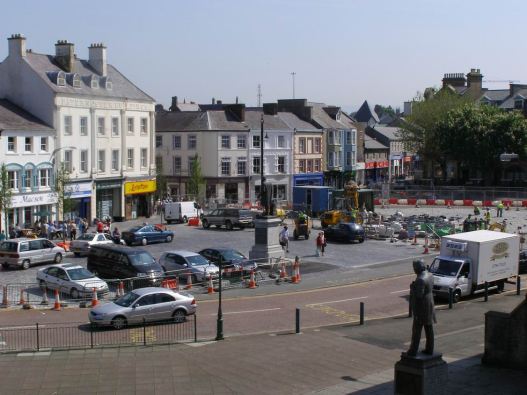

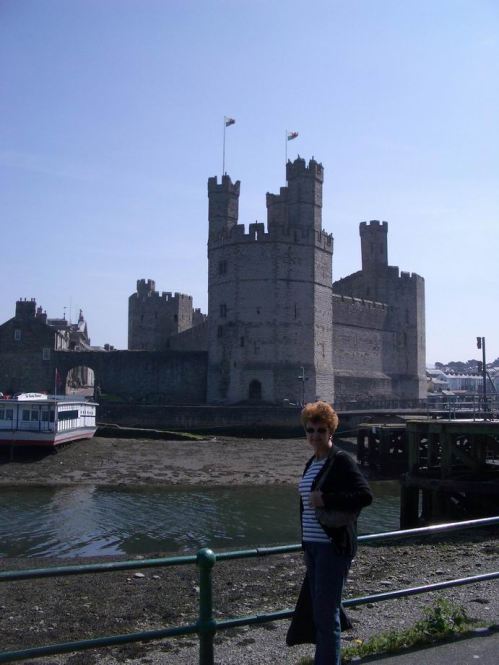
 The old bridge that I used to cross the river and sometimes swim under when the tide was right.
The old bridge that I used to cross the river and sometimes swim under when the tide was right.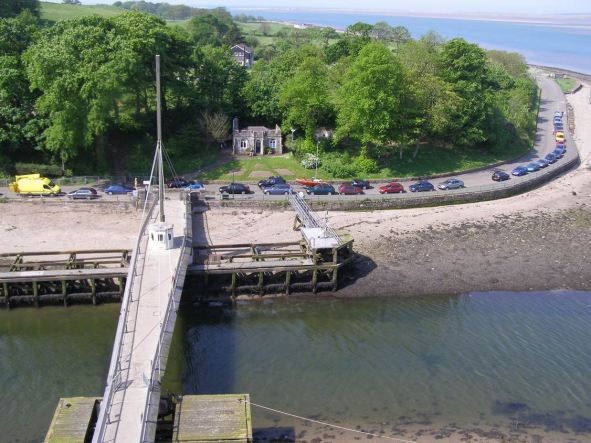
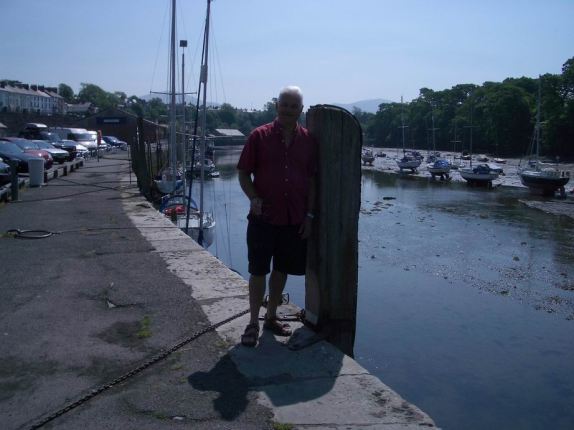
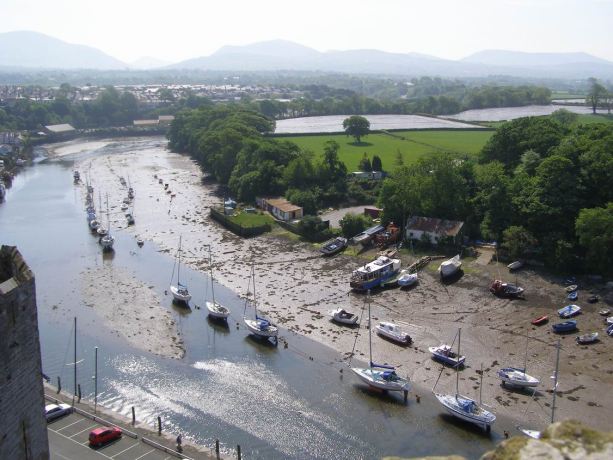



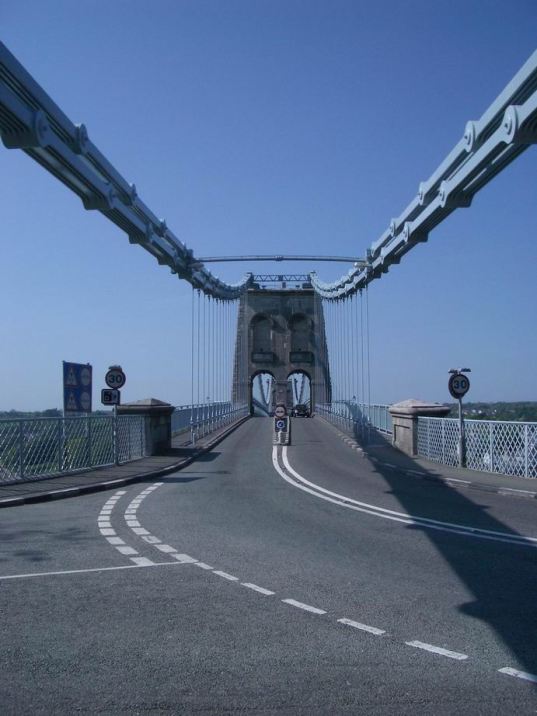
 Built by Telford and opened in 1826
Built by Telford and opened in 1826 What ever the weather I never get tired of the scenery in Wales.
What ever the weather I never get tired of the scenery in Wales.

 Try peddling these things across grass . . .
Try peddling these things across grass . . .
 The treat of the holiday, cost was 1/- when I first went to Prestatyn, (which was expensive, so it was a great treat), but over the years the price grew to 2/6d by 1958, which, I think, was my last visit to this ice cream shop and my last visit to Gronant.
The treat of the holiday, cost was 1/- when I first went to Prestatyn, (which was expensive, so it was a great treat), but over the years the price grew to 2/6d by 1958, which, I think, was my last visit to this ice cream shop and my last visit to Gronant.